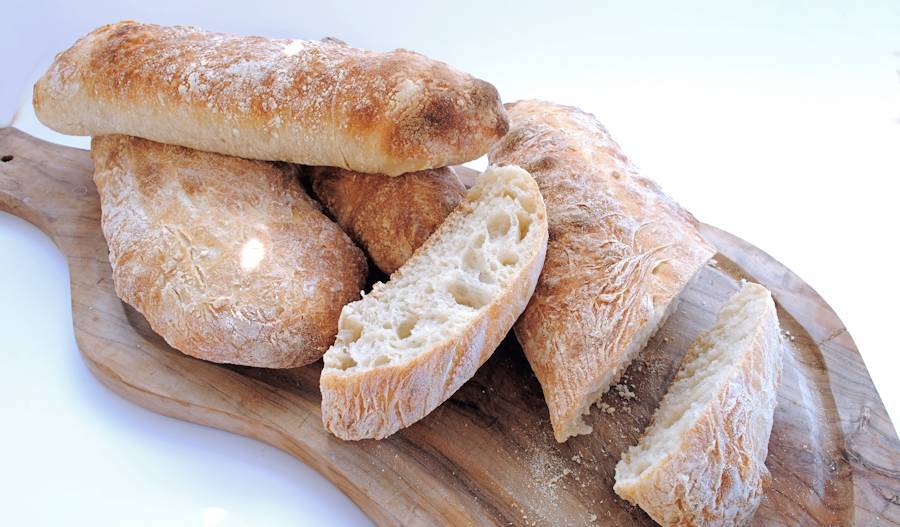
Everyone loves airy crusty bread: you can’t beat a good baguette, and ciabatta is excellent when fresh and even better turned into a panino. Both are flavoursome although with slightly different flavours, with large air bubbles and chewy crust. It’s the dough with high or very high hydration level that makes those beautiful air bubbles.
Exactly. The dough next to impossible to work.
My attempts at the high hydration dough challenge are usually well-advertised by VERY BAD language peppered with EVEN WORSE expletives coming from the kitchen. Notable examples here being joululimppu the Finnish bread, malt vinegar rye and said ciabatta. Scraping the dough off the worktop against its clear wish to spread in the opposite direction and ending up with about two thirds of the amount I started off with – the rest mostly sitting in my hair.
But the ciabatta nightmare is no more – last Saturday there was polite silence coming from the kitchen and fantastic loaves from the oven. This recipe is a huge improvement; relatively quick so perhaps does not carry as much flavour as a sourdough loaf would, but it’s MANAGEABLE! Dare I say EASY! And the OVEN SPRING on those little numbers is a sight to behold!
And why ‘coccodrillo’? Oh please - don’t these loaves look just like gnarly little crocodiles?
Based on Jason’s quick coccodrillo ciabatta recipe which I found on The Fresh Loaf site.